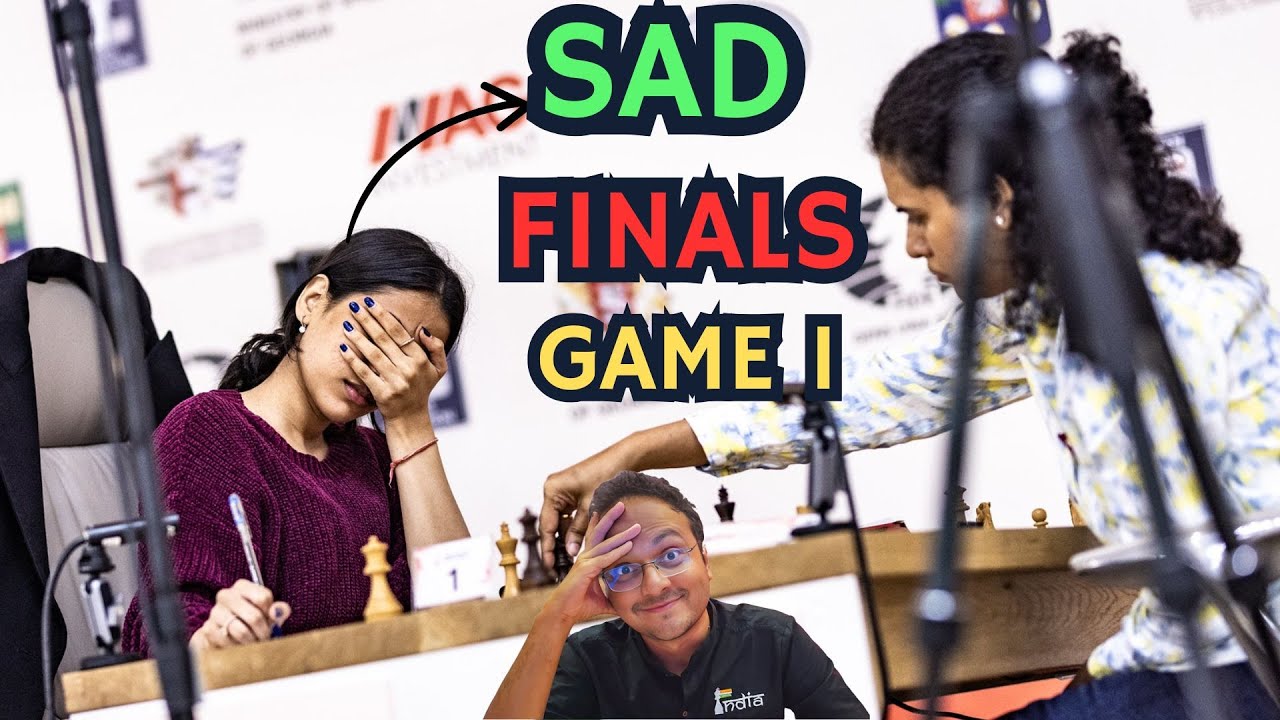The 2025 FIDE Women`s Chess World Cup final has delivered a classic contest, culminating in a dramatic deadlock that now pushes the championship into tiebreaker territory. After two intensely fought classical games, Indian Grandmaster Koneru Humpy and prodigious talent Divya Deshmukh find themselves inseparable, with the coveted World Cup title hanging precariously in the balance as they prepare for a series of rapid-play showdowns.
The Classical Confrontation: A Tale of Resilience and Regret
The initial two classical games were a masterclass in strategic depth and psychological warfare. Game 1 saw Divya Deshmukh, the younger contender, grappling with what she later described as a string of “wrong choices.” Despite the game ultimately ending in a draw, her post-match reflection betrayed a hint of self-reproach, confessing it “felt like a loss.” Such is the exacting nature of elite chess, where even a shared point can leave a bitter taste if the missed opportunities loom large.
Game 2, however, presented a more composed Divya. Facing Koneru Humpy`s Queen pawn opening, a transpositional choice, Deshmukh demonstrated remarkable resilience. Humpy, known for her sharp positional play, secured an optical advantage with her pair of bishops in the early stages. Yet, Divya`s strategic acumen shone through as she meticulously positioned her knights, effectively neutralizing White`s potential for immediate threats. The game unfolded into a complex minor-piece and rook exchange, transitioning into a queen-and-minor-piece endgame where neither side could find a decisive breakthrough.
Humpy, ever the fighter, attempted to create chances with a pawn sacrifice in the endgame. This bold maneuver, however, came at the cost of her bishop pair, trading positional advantage for dynamic play. While briefly a pawn up, Divya navigated the complexities, expertly covering her weaknesses. Ultimately, Humpy recovered the sacrificed pawn, and the position simplified to a point where Divya could force a draw by repetition after 34 moves, leading to the inevitable tiebreakers.
The Stakes: A Generational Battle for Supremacy
This final pits the seasoned experience of Koneru Humpy, a former World Rapid Champion and one of India`s most decorated female chess players, against the youthful exuberance and aggressive style of Divya Deshmukh, a rising star who has defied expectations throughout the tournament. The World Cup title not only confers immense prestige but also secures a crucial spot in the Candidates Tournament, a pathway to challenge for the World Championship crown. The pressure is immense, and the shift from deliberate classical play to the lightning-fast decisions of rapid chess adds another layer of mental fortitude required.
The Decisive Format: Speed, Precision, and Nerve
With the classical games unable to separate these formidable opponents, the championship will now be decided through a series of increasingly faster tiebreaker matches. The format is designed to test every facet of a player`s skill, particularly their ability to perform under extreme time pressure:
- First Round: Two games of 15 minutes per player, with a 10-second increment after every move.
- Second Round (if still tied): Two games of 10 minutes per player, with a 10-second increment.
- Third Round (if still tied): Two games of 5 minutes per player, with a 3-second increment.
- Final Round (if still tied): A solitary set of two 3-minute games per player, with a 2-second increment per move, to finally determine the victor.
This progressive acceleration of the time controls promises a spectacle of rapid-fire strategy and potential tactical fireworks. The margin for error shrinks with each passing minute, transforming the deep analysis of classical chess into an intuitive, high-octane battle of nerves.
As Koneru Humpy and Divya Deshmukh prepare to return to the board, the chess world holds its breath. This isn`t merely a competition of moves; it`s a test of resilience, adaptability, and the sheer will to win. The 2025 FIDE Women`s Chess World Cup is poised for a truly thrilling conclusion, where speed will meet strategy, and only one champion can emerge from the strategic storm.

